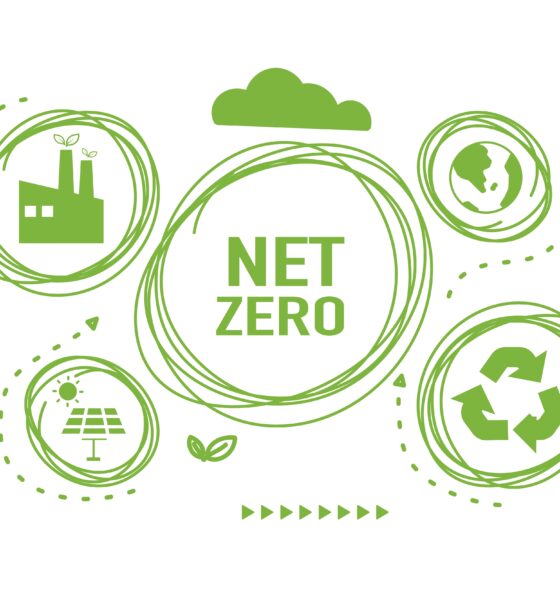

Environment
Primary Methods for Businesses to Reach Zero Emission
Singapore is working to reduce carbon emissions through various measures, including increasing renewable energy sources, encouraging energy-efficient businesses, promoting green technologies, supporting clean energy research, and encouraging individuals to apply sustainable practices.
In recent years, the world has seen a dramatic increase in companies committing to reducing their carbon footprint and achieving zero emissions. This results from growing public awareness about the harmful effects of greenhouse gas emissions on the environment and the urgent need to address the issue. Here are the top methods that businesses can use to reach zero emissions.
Invest in renewable energy
One of the most effective ways for businesses to reduce their carbon footprint is to invest in renewable energy sources such as solar, wind, and geothermal. These energy sources are sustainable, clean, and do not emit harmful pollutants. By installing solar panels on their rooftops or buying renewable energy credits, businesses can reduce their reliance on fossil fuels and significantly impact their carbon footprint.
Implement energy-efficient technologies
Another way businesses can reduce their carbon emissions is to implement energy-efficient technologies. These technologies can include LED lighting, smart thermostats, and energy-efficient appliances. Businesses can reduce their carbon footprint and save money on energy bills by using less energy.
Promote sustainable transportation
Businesses can also reduce their carbon footprint by promoting sustainable transportation options. This can include encouraging employees to carpool, providing electric vehicle charging stations, and offering incentives for using public transportation. By reducing the number of cars on the road, businesses can reduce their carbon emissions and promote a healthier environment.
Reduce waste
Reducing waste is another effective way for businesses to reach zero emissions. This can include implementing recycling programs, reducing packaging waste, and reducing food waste. Businesses can save money on disposal costs and reduce their carbon emissions by reducing waste.
Embrace a circular economy
The circular economy is a system that focuses on eliminating waste and reusing resources. By embracing the circular economy, businesses can reduce their carbon footprint by reducing the amount of waste they produce and using resources more efficiently. This can include using recycled materials in production, designing products for reuse, and implementing closed-loop supply chains.
Encourage sustainable practices in the supply chain
Another way businesses can reach zero emissions is to encourage sustainable practices in their supply chain. This can include sourcing materials from sustainable sources, working with suppliers to reduce their carbon footprint, and implementing environmental standards in the supply chain. By working with suppliers to reduce their carbon footprint, businesses can significantly impact their overall carbon emissions.
Embrace a culture of sustainability
Finally, businesses can reach zero emissions by embracing a culture of sustainability. This can include educating employees on sustainable practices, promoting a sustainable lifestyle, and setting sustainability goals. By making sustainability a core value, businesses can create a culture committed to reducing their carbon footprint and positively impacting the environment.
Ways businesses can take advantage of carbon credits:
- Offset emissions: Businesses can use carbon credits to offset their greenhouse gas emissions by investing in projects that reduce emissions elsewhere. This can help them meet their emissions reduction goals and support the growth of sustainable projects.
- Sell carbon credits: Businesses that have reduced their own emissions can sell their unused carbon credits to other companies or organizations that need to offset their own emissions. This can create a new revenue stream for the business and encourage other organizations to reduce their own emissions.
- Improve brand reputation: By investing in carbon credits and offsetting emissions, businesses can improve their brand reputation as environmentally responsible and sustainable. This can help attract new customers and increase loyalty among existing customers.
- Meet regulatory requirements: In some countries, businesses are required by law to offset their emissions by purchasing carbon credits. By investing in carbon credits, businesses can ensure they are meeting these requirements and avoid potential penalties or fines.
- Support sustainable development: Carbon credits can be used to support sustainable development projects, such as renewable energy, afforestation, and energy efficiency. By investing in these projects, businesses can help promote sustainable development and contribute to a more sustainable future.
There are many methods that businesses can use to reach zero emissions. Through the steps above, businesses can make a significant impact in reducing their carbon footprint and creating a more sustainable future. By working together to reduce our carbon footprint, we can create a better world for future generations.


 Environment10 months ago
Environment10 months agoAre Polymer Banknotes: an Eco-Friendly Trend or a Groundswell?

 Environment11 months ago
Environment11 months agoEco-Friendly Home Improvements: Top 7 Upgrades for 2025

 Features9 months ago
Features9 months agoEco-Friendly Cryptocurrencies: Sustainable Investment Choices

 Features10 months ago
Features10 months agoEco-Friendly Crypto Traders Must Find the Right Exchange



























